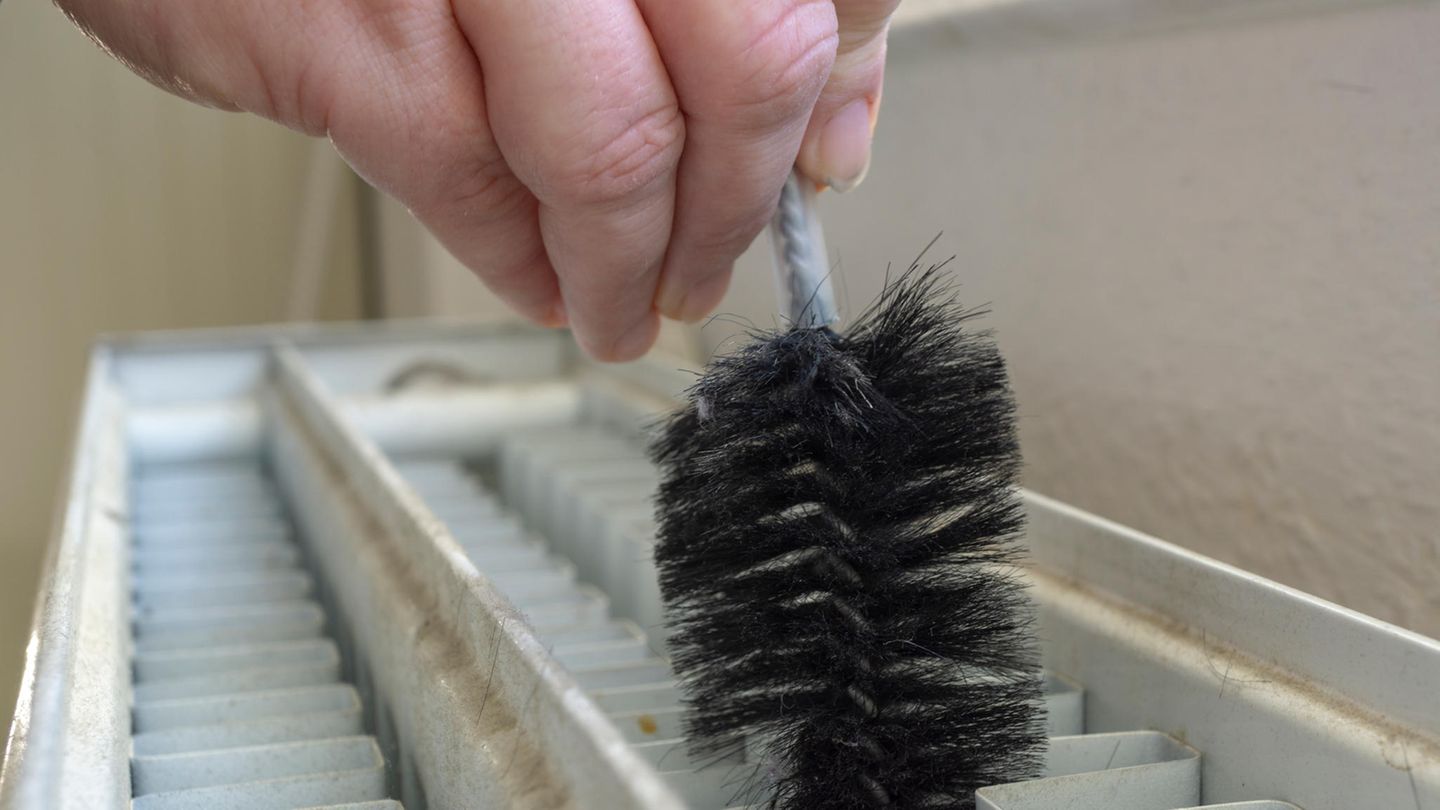In the cold winter months, many radiators run at full blast. During this time, dust and dirt residues accumulate in the interior rooms, which not only have a negative impact on the indoor climate: They can also reduce energy output and thus increase heating costs.
Did you know that even a thin layer of dust can reduce heating performance by up to ten percent? Conversely, this means that the thicker the layer of dust, the more energy has to be generated to heat up a room. Once the dirt really burns into the radiators in winter, the heating output is said to drop by up to 30 percent. In addition, the dust is repeatedly stirred up by the warm air and thus noticeably worsens the room climate – especially for allergy sufferers. It is all the more important to regularly dust off the radiators. You can find out when the right time is and how this works best in the next section.
When should radiators be cleaned?
In fact, it makes the most sense to dust off radiators before they are (yet) in operation. This will remove any dirt particles from last season that may have accumulated in the spaces between and inside. Another advantage here should be that cold heaters with a special easier to clean because they attract less dust than warm ones – and you don’t run the risk of burning yourself if you touch them. Depending on the length of the cold period, it can also do no harm to dust off the radiators at least once more between autumn and winter in order to keep energy costs as low as possible. You can find out which tools are useful here as follows.
This is how you remove dust and dirt from heaters
Depending on the type of heating installed in your living space, there are different cleaning options. We present a few common methods. A tip beforehand: place an old towel under the radiator to catch the dust and dirt residue. Alternatively, you can vacuum the dirt very easily, depending on the floor covering.
1. Panel radiator
Panel radiators are also called panel radiators whose front is completely closed and open at the top (with an overlying grille). In order to clean them, it is advisable to remove the heating grille – depending on the type of heater, the grille can either be lifted up or unscrewed – and cleaned separately. For example in the shower with a sponge and some washing-up liquid. A radiator brush can be used to remove dust and dirt from the fins be used. Alternatively, there are also models with or .
2. Sectional radiator
The sectional heaters are among the oldest types of heating. In this antiquated model, individual elements (the so-called links) made of sheet steel are lined up – the number can vary depending on the size of the room. The advantage of cleaning is that you usually do not need a special brush. A damp cloth and some washing-up liquid should be sufficient to remove dust and dirt residue from the steel links. If the gaps are more difficult to reach, you can also use an ordinary one use – or a special one .
3. Panel radiator
As the name already suggests, this type of heater is a very flat model. It is usually attached to the wall and not to the floor. While the front can be easily cleaned with a damp cloth, the slats and the gap between the radiator and the wall are difficult to reach. Here the use of a radiator brush – or also called for panel radiators – can be quite useful. There are even special ones for commercially available vacuum cleaners, which are intended to help with dust-free and water-free cleaning.
4. Tubular heater
So-called tubular radiators, which are mainly used in the bathroom, are particularly popular and modern. They serve not only to heat the premises, but are used as towel warmers. And that’s not the only advantage: since there are no open spaces, no dust can accumulate inside the heater. Only the easy-care slats get dirty and can be cleaned either with a damp cloth or with a special one dust for radiators.
This article contains so-called affiliate links. Further information are available here.
Source: Stern




